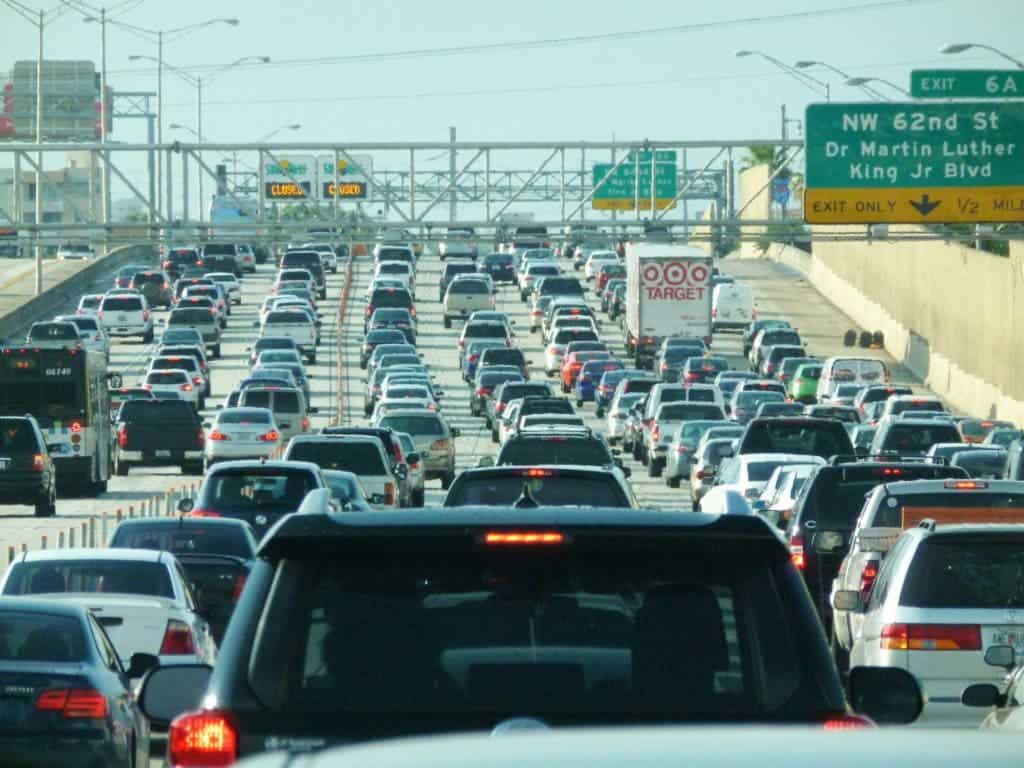The first study to measure in-car pollution came up with some nasty conclusions.
Polluted commute

After a hard day’s work, being stuck in traffic is the worst feeling, but it’s becoming more and more common. As cities have grown larger and more urbanized, the number of cars has also grown. More than 160,000 cars are being produced every single day, and that’s easily visible on the streets. In the New York area, rush hour can start as early as 3pm and end as late 7pm — if you’re unfortunate enough to be on the street in that interval, you’re not moving fast. Or you’re not moving at all. But things might be even worse, due to pollution.
Pollution is routinely measured in large cities, but the way those measurements are carried out might be missing a big part of the picture. In a new study, scientists detail how rush hour might be causing even worse pollution than we thought. Sensors are typically placed on the ground, next to the street. They usually measure particulates over 24h. This methodology, however, has two significant drawbacks: for starters, they might miss short-term variabilities, as is the case with rush hour, and they measure what’s happening outside — not inside the cars. This new study resolves both those issues.
Two times worse
Researchers from Duke University, Emory University and the Georgia Institute of Technology strapped measuring devices onto the passenger seats of commuters in Atlanta. The devices were customized to sample the air quality just like the human lungs. They found that pollution rates were twice higher inside the cars than outside.
“We found that people are likely getting a double whammy of exposure in terms of health during rush-hour commutes,” said Michael Bergin, professor of civil and environmental engineering at Duke. “If these chemicals are as bad for people as many researchers believe, then commuters should seriously be rethinking their driving habits.”
Although drivers had different habits (driving faster or slower, with their windows open or closed), which can influence the results, the inside of all cars yielded much higher pollution rates. Researchers even involved 30 different car types in the study, so they could show this issue isn’t related to a particular brand or type of car.
It’s not clear exactly why this happens, though researchers suspect several factors, some related to rush-hour specific weather conditions, while others emerge as a chemical characteristic of exhaust gases.
“There are a lot of reasons an in-car air sample would find higher levels of certain kinds of air pollution,” said Heidi Vreeland, a doctoral student in Bergin’s lab and first author of the paper. “The chemical composition of exhaust changes very quickly, even in the space of just a few feet. And morning sun heats the roadways, which causes an updraft that brings more pollution higher into the air.”
“There’s still a lot of debate about what types of pollution are cause for the biggest concern and what makes them so dangerous,” Bergin added. “But the bottom line is that driving during rush hour is even worse than we thought.”
So rush hour isn’t only wasting a lot of time and money, but it also poses a hazard to our health. In Atlanta, like in many other cities, this may very well be an example of urban failure. Most of the time, the streets aren’t really crowded, but for a few hours in the morning and a few hours in the afternoon, they’re extra crowded. Streets and highways don’t really scale with the size of cities, and this is an issue many parts of the world are already struggling with. Studies like this can help urban planners take measures to protect citizens. Hopefully, they will listen.
Journal Reference: Heidi Vreeland, Rodney Weber, Michael Bergin, Roby Greenwald, Rachel Golan, Armistead G. Russell, Vishal Verma, Jeremy A. Sarnat. Oxidative potential of PM 2.5 during Atlanta rush hour: Measurements of in-vehicle dithiothreitol (DTT) activity. Atmospheric Environment, 2017; 165: 169 DOI: 10.1016/j.atmosenv.2017.06.044


